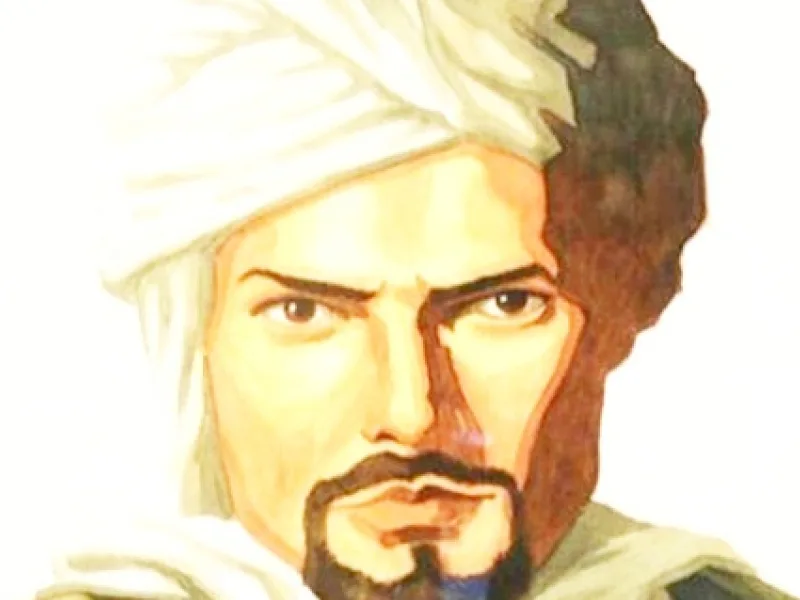One of the greatest travelers in the world, Ibn Battuta, traveled to various parts of the world for 28 years. Surpassing even Marco Polo in both the scope of his travels and his detailed accounts, one of the regions he visited was Anatolia. He praised Anatolia with the words: “This land known as the Land of the Romans (Rum) is perhaps the most beautiful country in the world! While God Almighty distributed beauties to other lands one by one, He gathered them all here!” So where did Ibn Battuta go in Anatolia, and whom did he meet there?
Alanya
Ibn Battuta entered Anatolia through Alanya. About the people there, he says: “The most beautiful people in the world, the cleanest-dressed folk live here, and the most delicious foods are cooked here. Among all the creatures God has created, the most compassionate are the people of this land.”
He notes that Alanya was ruled by a man named Yusuf and that his residence was ten miles from the city center. He described the city as “one of the most beautiful in the world in terms of size, beauty, and magnificence.” He also remarks on the well-organized city layout of Antalya. He adds that the non-Muslim population lived near the port and had enclosed their neighborhoods with walls. In the city center, there were madrasas, public baths, and rich bazaars belonging to the Muslim population.
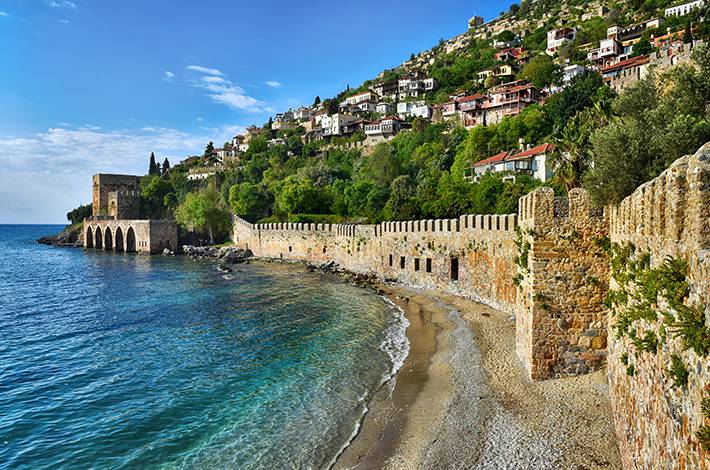
Alanya Castle
The Most Virtuous People He Had Seen
Ibn Battuta observed that wherever the Turkmens lived, the Akhis (guild leaders) were also present. He defines the Akhi Sheikh as “a man who gathers skilled craftsmen and unemployed single young men.” He explains that the Akhis were responsible for the safety and well-being of their guests, including providing for all their needs. About the Akhis, Ibn Battuta says:
“I have never seen people more moral and virtuous than them in the world.” He compares their attitudes to those of the people of Shiraz and Isfahan.
Burdur
After Alanya, Ibn Battuta visited Burdur, where he stayed for just one day. He mentions it was a small city surrounded by gardens, with a fortress atop a steep mountain. He notes that he was hosted very well during his short stay.
Isparta
From Burdur, Ibn Battuta traveled to Isparta. He notes that the city had a fortress on a high hill, with streams flowing around it and vibrant bazaars. He also visited Eğirdir, which he describes as heavily populated. He observed that the lake in the city allowed boat transportation to surrounding villages and towns.
Konya
Next, he arrived in Konya, a large and beautiful city known for its abundant fruits. He notes that craftsmen were organized in specific sections of the bazaar. Ibn Battuta visited the tomb of Mevlana Jalal al-Din Rumi, describing him as a great saint and the pole of scholars. He recounts a story about how Rumi’s famous Masnavi was composed. Allegedly, someone once entered Rumi’s lodge with a tray of halva. Rumi ate a slice, then followed the man outside, disappearing for a while. Upon returning, he began to recite Persian poetry, which his students transcribed. This collection became the Masnavi, which, according to Ibn Battuta, was read in lodges every Friday.
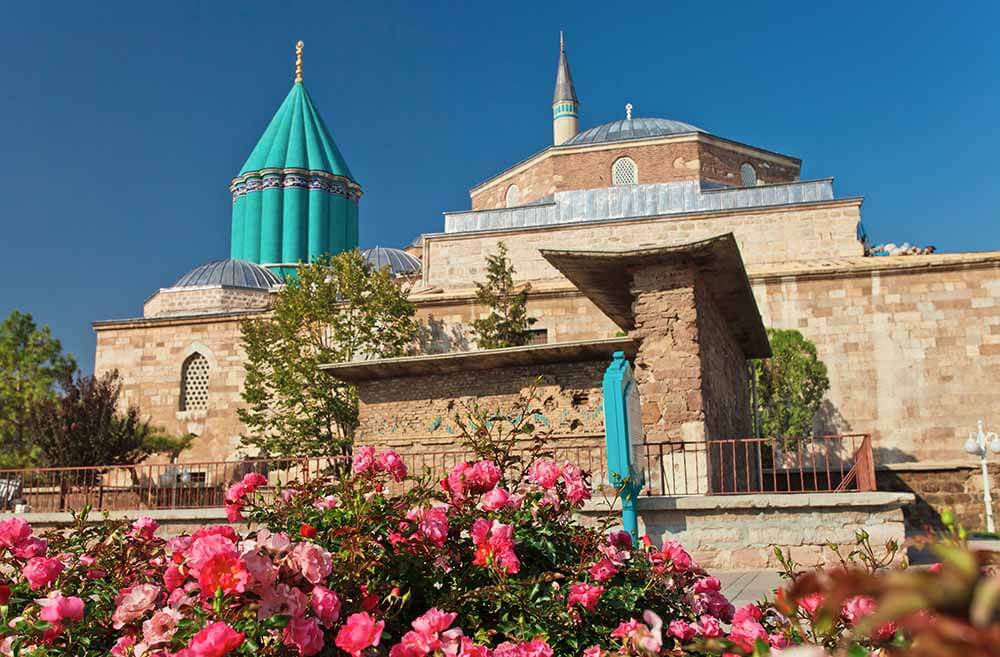
Mausoleum and museum of Mevlana in Konya, Turkey.
Karaman
Continuing to Karaman (then known as Larende), Ibn Battuta states he was welcomed warmly. He describes the city as lush with gardens and famous for its abundant waters.
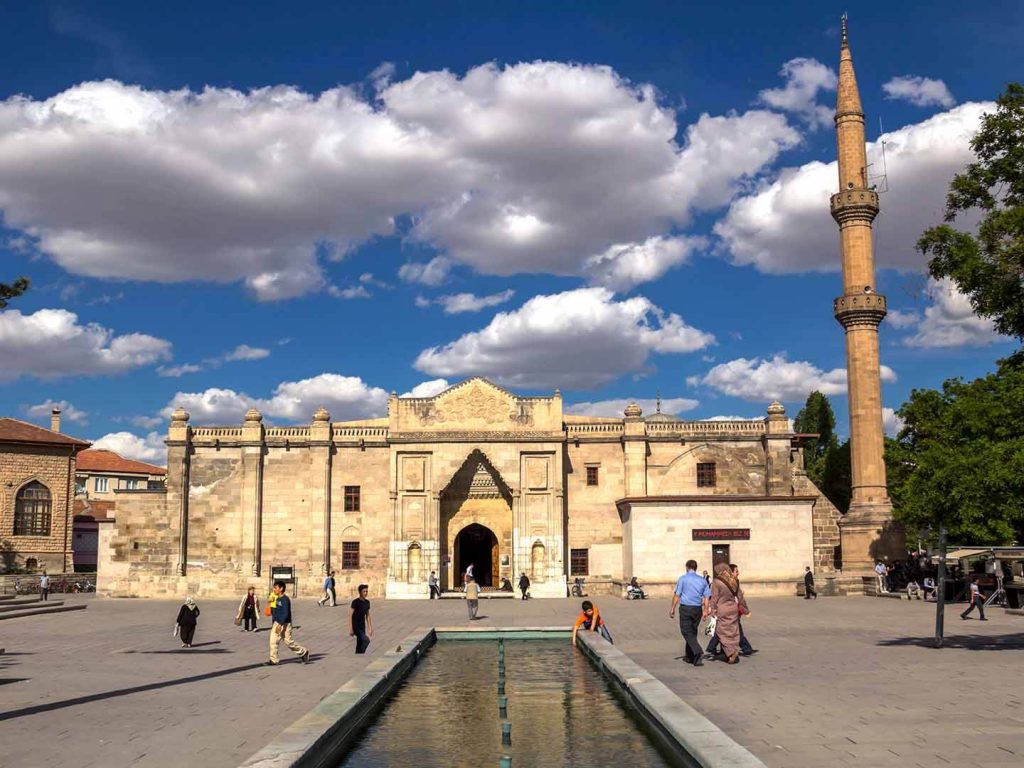
Historic Ulu Cami, Karamanoglu Camii, built between 1408-1409.
Aksaray
Ibn Battuta notes that the city, known as Aksarayî, was surrounded by streams and gardens. He mentions the local production of carpets and kilims made from sheep’s wool.
Niğde
After Aksaray, Ibn Battuta reached Niğde, a city split by the Karasu River. He notes that part of the city was in ruins.
Kayseri
In Kayseri, Ibn Battuta highlights that in the absence of a ruler, governance was handled by the Akhis. He portrays them as acting like sovereigns in their behavior, commands, and even the way they rode horses: “They behaved just like kings!”
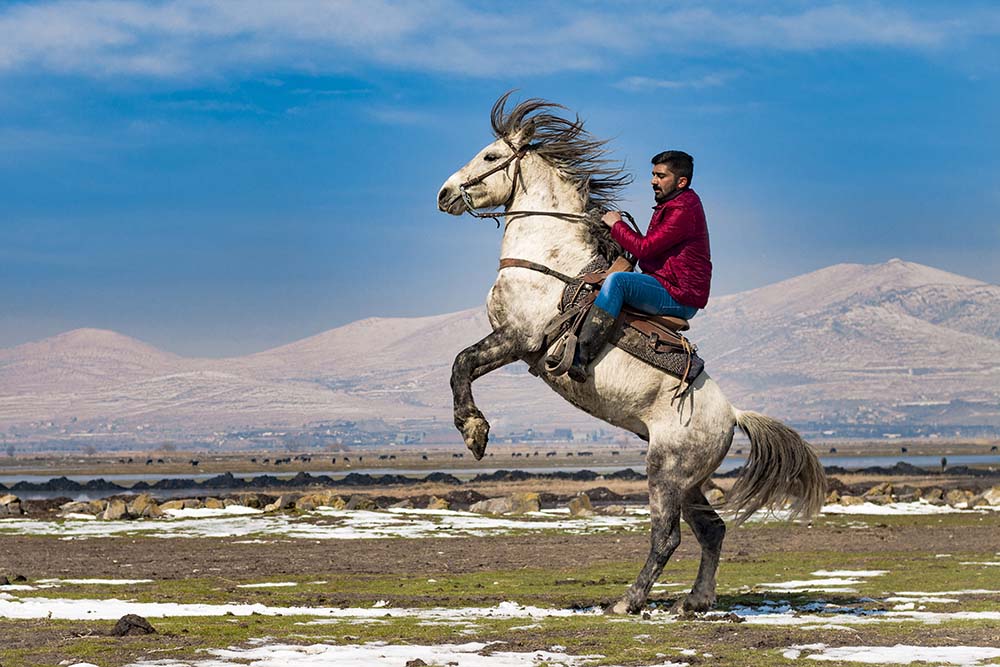
Local man riding horse in Kayseri
Sivas
His next stop was Sivas, then the capital of Eretna Bey. He praises the city’s organized structure and broad avenues. He also mentions the presence of a building called Dar al-Siyada, reserved for the descendants of the Prophet, where he stayed for six days.
Amasya
Ibn Battuta describes Amasya as: “A city on the bank of a great river, surrounded by vineyards and orchards, full of fruit and trees.” He notes that homes and gardens were irrigated using water from the river.
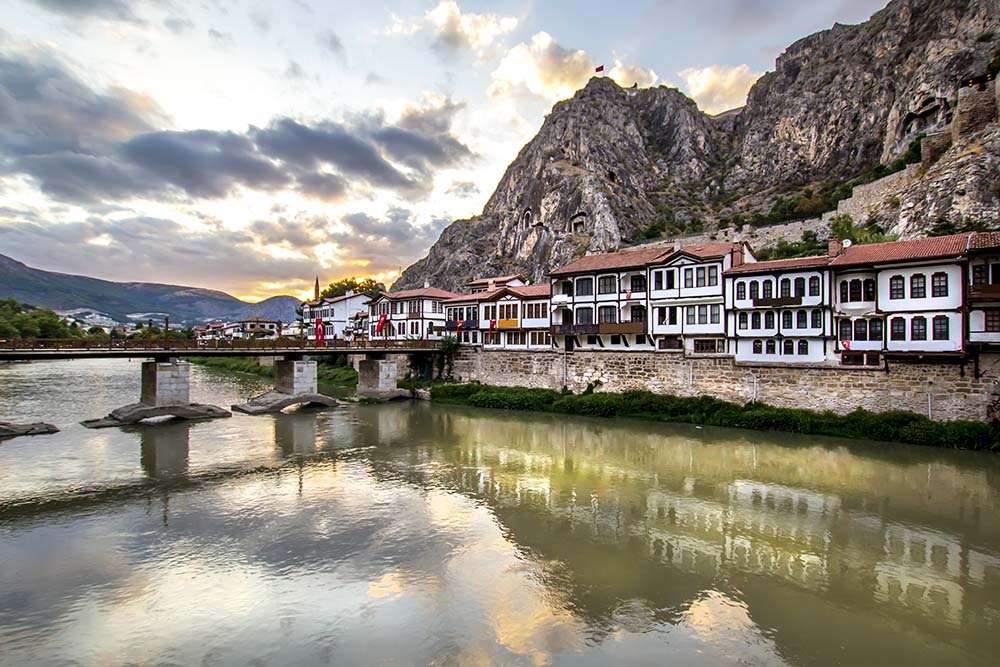
Old Ottoman houses evening panoramic view by the Yesilirmak River in Amasya City. Amasya is populer tourist destination in Turkey.
Erzincan
After Amasya, he passed through Sonusa in Erbaa and Gümüşhane, where merchants from Iraq and Syria came to buy goods, before reaching Erzincan. He mentions that textiles named after the city were woven there and that copper used for kitchenware was also mined in Erzincan.
Erzurum
In Erzurum, he found much of the city in ruins due to ongoing wars between two Turkmen groups, the Ak Koyunlu and Kara Koyunlu. He stayed at an Ahi lodge for three days. Though he had planned to leave earlier, the Akhis insisted that guests must stay a minimum of three days, so he postponed his departure.
Birgi & İzmir
In Birgi (now a neighborhood of Ödemiş, İzmir), Ibn Battuta visited the scholar and Aydınoğlu Mehmet Bey. He recounts: “The ruler sent us flour, rice, and oil in sheepskin sacks, a Turkish custom.” He notes that they cooked their meals with these daily provisions. As a sign of Turkish respect for religious scholars, the scholar sat at the head of the table, while the ruler sat to his right. Ibn Battuta stayed in Birgi for 14 days. He remarks that most of Izmir was in ruins but provides little other information. Often, Ibn Battuta focused more on religious figures and personalities than on the places themselves.
Manisa
He met Saruhan Bey in Manisa, the local ruler, and recounts visiting the tomb of his recently deceased son: “The child’s body was washed and placed in a tin-lined, iron-covered wooden coffin and suspended under an open dome to dissipate odors. Later, the dome would be completed, the coffin lowered, and the body covered with clothes.”
Bursa & Orhan Bey
Describing Bursa as a magnificent city surrounded by gardens and streams, he also mentions a hot spring outside the city used by both men and women. There was also a zawiya (guesthouse) that hosted travelers for up to three days.
Ibn Battuta arrived in Bursa during the reign of Orhan Bey and described him as: “The greatest among the Turkmen rulers in terms of wealth, territory, and military power. He had nearly a hundred fortresses and spent his time inspecting them and fixing any deficiencies. Reportedly, he never stayed in one city for more than a month and was constantly at war with the infidels.”
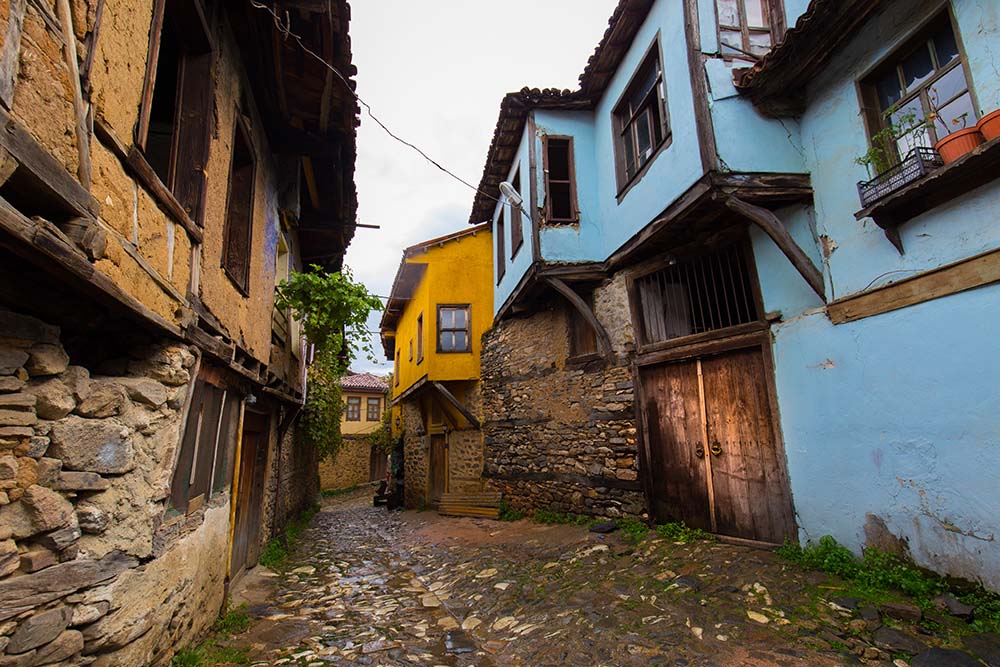
İznik
After Bursa, Ibn Battuta visited İznik, where Orhan Bey’s wife Nilüfer Hatun and some palace officials resided. He notes that the locals’ homes, gardens, and fields were clustered together. İznik was rich in all kinds of fruit, especially chestnuts, which were abundant and cheap. Due to his horse’s illness, he stayed in İznik for 40 days, during which Nilüfer Hatun sent him gifts. When the horse did not recover, he continued on to Geyve, now part of Sakarya province.
Kastamonu
Ibn Battuta called Kastamonu “one of the most beautiful and largest cities in Anatolia. Everything is easily accessible, and goods are incredibly cheap!” He states that for two dirhams, they could buy a large sheep or enough bread for everyone. “Two dirhams of honey were enough for all of us. One dirham’s worth of chestnuts and walnuts was more than enough! Even in the coldest days of winter, a load of firewood cost only one dirham. Among all the countries I’ve traveled to, I’ve never seen one as affordable as this!” He also notes that it was customary in Kastamonu to hold public gatherings after afternoon prayers, where food was served generously to everyone without discrimination.

